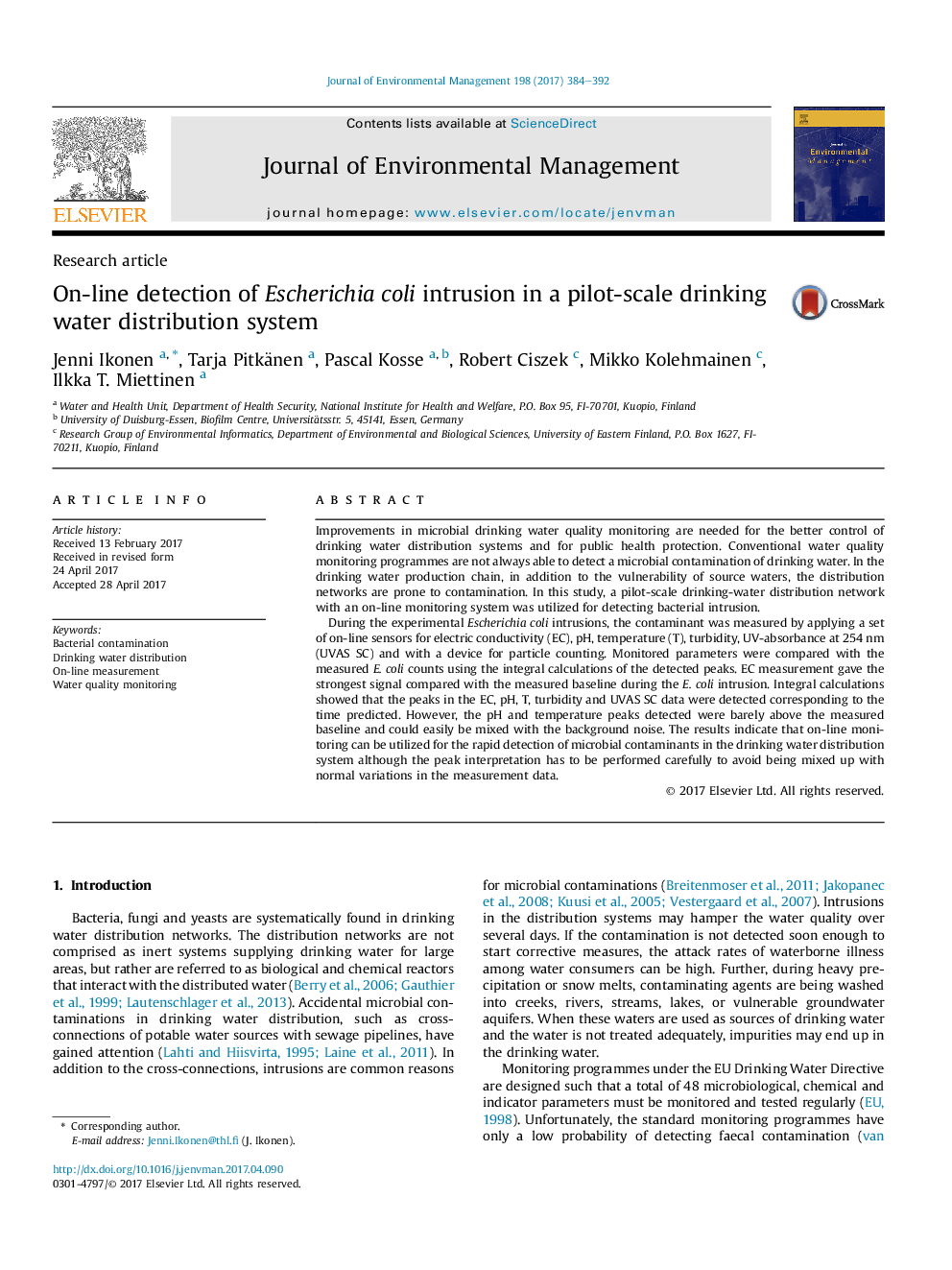| Article ID | Journal | Published Year | Pages | File Type |
|---|---|---|---|---|
| 5116763 | Journal of Environmental Management | 2017 | 9 Pages |
Abstract
During the experimental Escherichia coli intrusions, the contaminant was measured by applying a set of on-line sensors for electric conductivity (EC), pH, temperature (T), turbidity, UV-absorbance at 254 nm (UVAS SC) and with a device for particle counting. Monitored parameters were compared with the measured E. coli counts using the integral calculations of the detected peaks. EC measurement gave the strongest signal compared with the measured baseline during the E. coli intrusion. Integral calculations showed that the peaks in the EC, pH, T, turbidity and UVAS SC data were detected corresponding to the time predicted. However, the pH and temperature peaks detected were barely above the measured baseline and could easily be mixed with the background noise. The results indicate that on-line monitoring can be utilized for the rapid detection of microbial contaminants in the drinking water distribution system although the peak interpretation has to be performed carefully to avoid being mixed up with normal variations in the measurement data.
Keywords
Related Topics
Physical Sciences and Engineering
Energy
Renewable Energy, Sustainability and the Environment
Authors
Jenni Ikonen, Tarja Pitkänen, Pascal Kosse, Robert Ciszek, Mikko Kolehmainen, Ilkka T. Miettinen,
